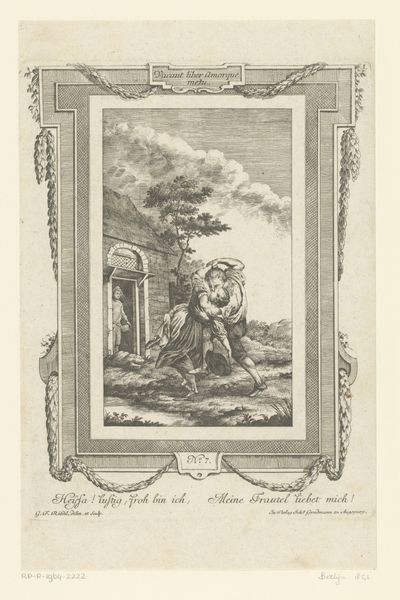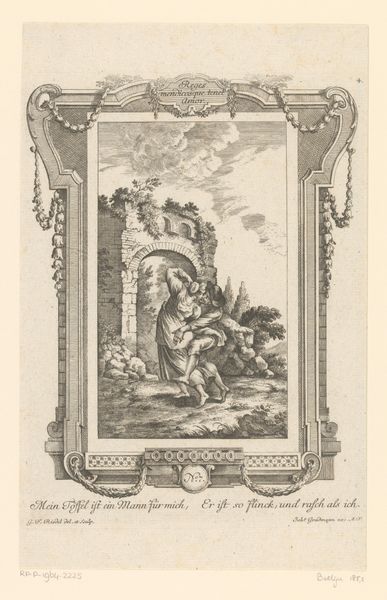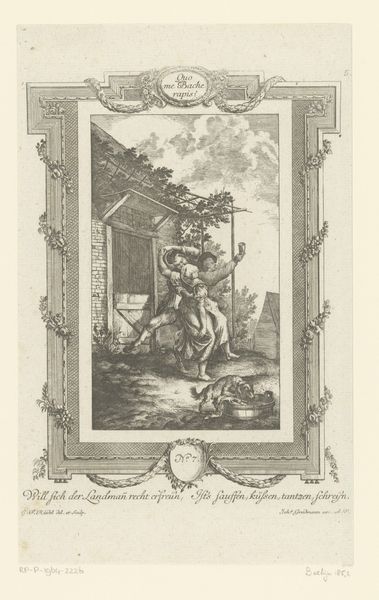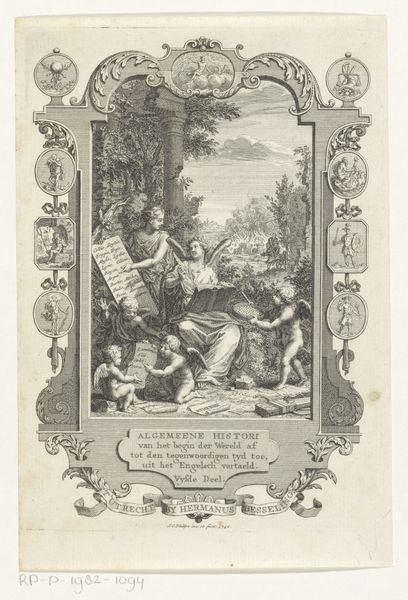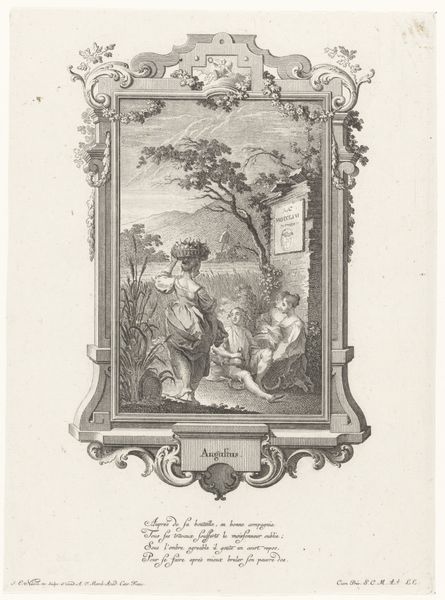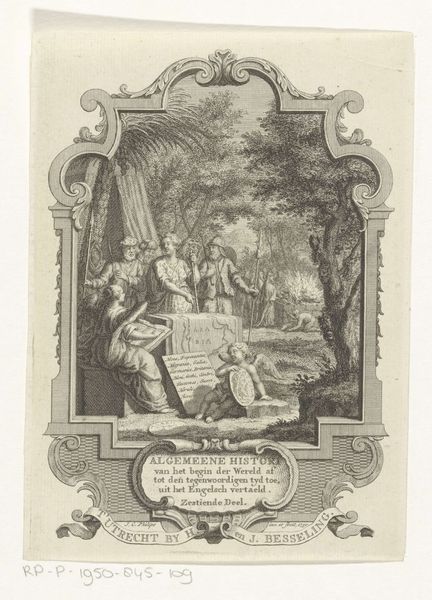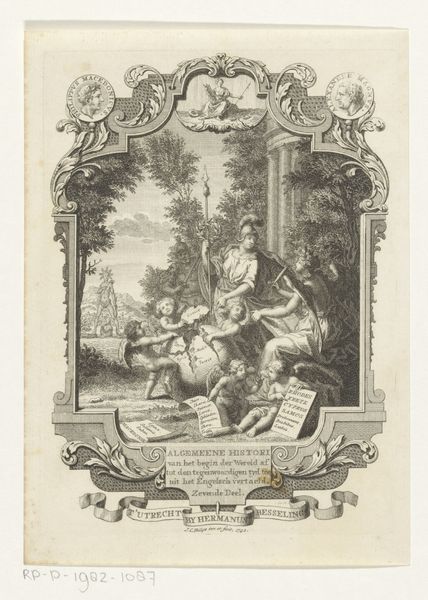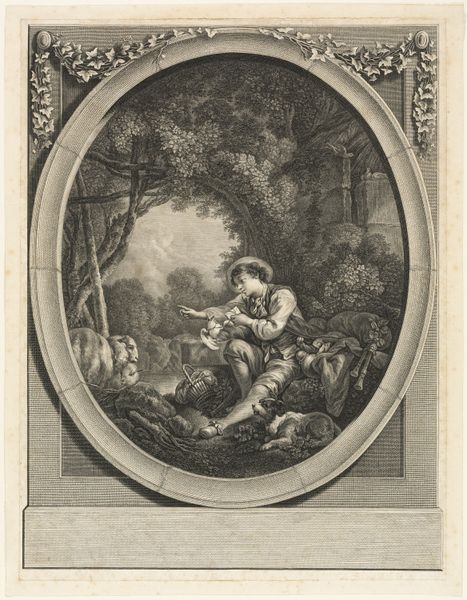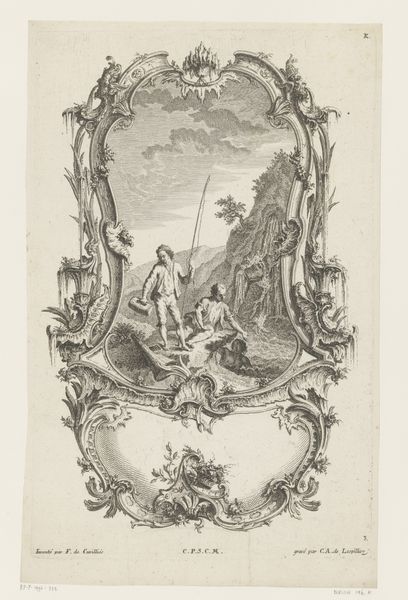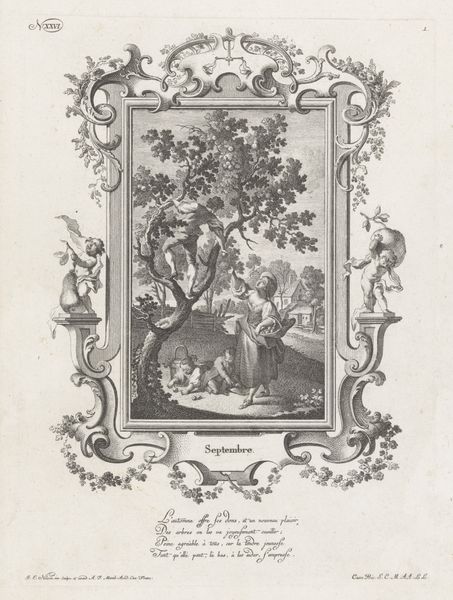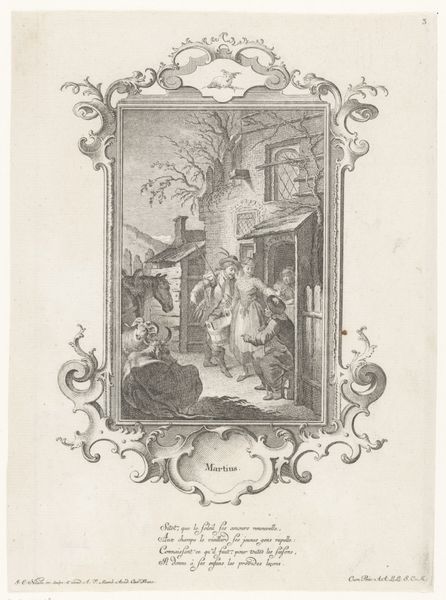
Dimensions: height 231 mm, width 176 mm
Copyright: Rijks Museum: Open Domain
Curator: Here we have "Verliefd stel kussend", an engraving by Gottlieb Friedrich Riedel, dating from 1778 to 1779. It’s part of the Rijksmuseum’s collection. Editor: It’s rather charming. The way the figures are framed within that ornate border creates a sense of intimacy, despite the overall small scale. The line work is exquisite, so delicate. Curator: Yes, and notice how the density of the lines shapes form and shadows. This print would have been produced through an intricate process, involving the careful carving of lines into a metal plate to hold ink. Each impression, a product of skilled labor. The text along the bottom further contributes to the production by alluding to "foolish" behavior. Editor: Indeed, it speaks to the period's fascination with form and precise representation, even in such a seemingly simple genre scene. How fascinating to observe the contrasting styles and subject-matters of figuration against the setting of landscape styles here. What do you think of that cottage? Curator: I think of it as a key part of the visual story being presented. This isn't just an image of romantic affection; it reflects a certain lifestyle, maybe alluding to some kind of cottage industry, a mode of production happening on a domestic scale. It is like they own the place and everything is a matter of course for them, a job perhaps. Editor: Interesting, I see it contributing to a broader romantic sensibility, connecting the figures to the beauty and tranquility of the natural world around them. Speaking more directly to the heart I believe that these Baroque, landscape and Romantic sensibilities all point to each other. Curator: Perhaps, but consider how prints like these functioned in the marketplace. Reproducible, relatively affordable art brought images and ideas into a wider sphere of consumption and the figures being peasants connects them back to their work. These modes of production had wide distribution to others which also ties into Romantic art's broader social circulation. Editor: True. These aesthetic objects, once seen, do then start to embody something more as the world begins to perceive it differently, they have a quality unto themselves which has become intertwined with labour's nature as the nature of our times! Curator: In this image it seems it embodies something more to explore as time goes on. Editor: Yes.
Comments
No comments
Be the first to comment and join the conversation on the ultimate creative platform.

